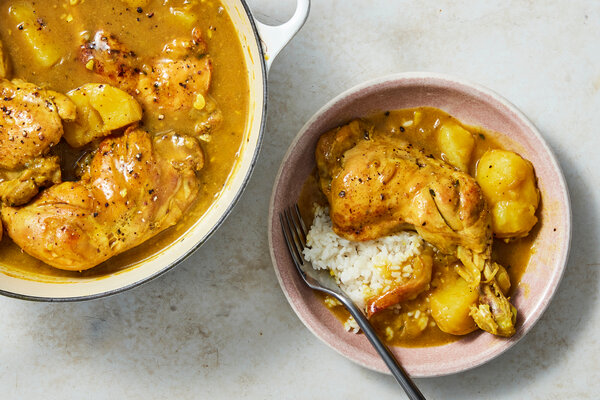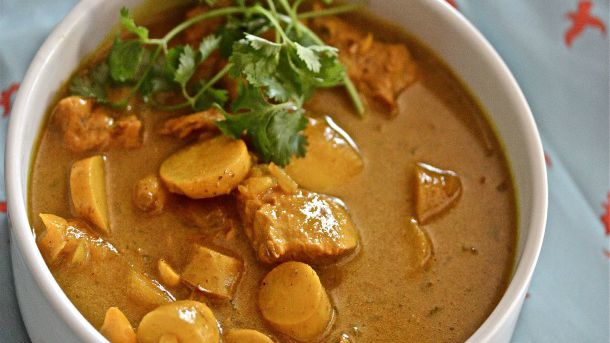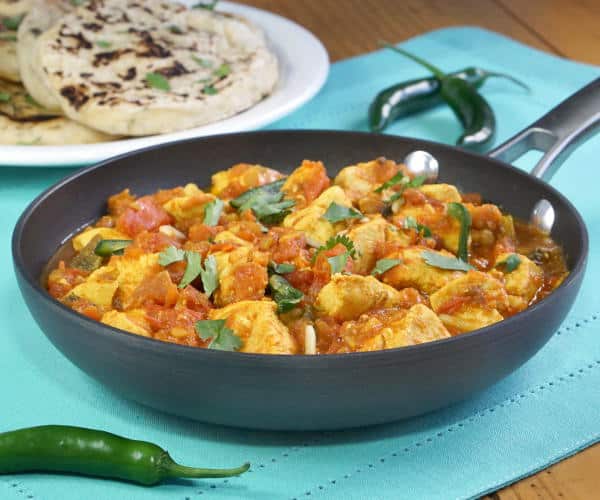What is the difference between Jamaican, Indian and Pakistani Curry?

The main distinction between Jamaican and Indian curry is curry powder in Jamaican curry. Curry in India is frequently sauce-based, with either coconut milk or cream combined with tomatoes, fresh herbs, and roasted spices (curry powders are a British innovation).
But there’s a lot more to curry than you would think.
So now we’re delving into the world of curries. We’ll look at some of the significant distinctions. But we’ll look at the similarities and if one is healthier than the other.
In the end, we’re trying to figure out what the difference is between Indian and Jamaican curry.
Let’s get started!
What are the ingredients in Jamaican curry?
Pre-made curry powder spice combinations, such as turmeric, cumin, paprika, cardamom, garlic, and fenugreek, are commonly used to make Jamaican curry. However, they add allspice, which gives Jamaican curry its distinct flavor and distinguishes it from other curries.

Curry powder from Jamaica is frequently used as a massage. After that, the components (chicken, peppers, potatoes, onion, and so on) would be left to marinate for a few hours before being cooked. After that, the ingredients are usually boiled in boiling water to make a stew.
What are the ingredients in Indian curry?
Curry is simply a mix of spices in India, and there isn’t even a meal named “curry” there. Fenugreek, cumin, turmeric, and coriander are the most used spices. Curry plant leaves are utilized in simmering foods.
The term “curry” has several etymologies. According to one etymology, the term “curry” derives from the Portuguese word “carel,” which describes the fragrant, spicy meals they discovered in India.
Another theory comes from the Tamil word Kari, which means sauce. Eventually, “curry” referred to nearly any sauce-based Indian food. Traditional Indian curry spice mixtures, on the other hand, generally include a cream or coconut milk base with a salt or acid component.
 Lime juice, garlic, ginger, tomatoes, or onions can provide salty or acidity. Turmeric, coriander, fenugreek, curry leaves, and cumin are virtually always included in curry. Ironically, store-bought curry powder (a British creation) rarely, if ever, contains the curry plant’s leaves.
Lime juice, garlic, ginger, tomatoes, or onions can provide salty or acidity. Turmeric, coriander, fenugreek, curry leaves, and cumin are virtually always included in curry. Ironically, store-bought curry powder (a British creation) rarely, if ever, contains the curry plant’s leaves.
If you’re thinking about creating your curry, make sure to read this recent post on my blog, where I discuss the distinctions between canned and carton coconut milk. If you’re creating curry, you should use canned coconut.
Even in India, individuals disagree over what ingredients go into a curry. In many sections of the nation, it may be used with fish or poultry, and vegetables. Dried coconut may be found in your curry if you live further inland. Coastal Indian curries will have more turmeric, resulting in more yellow. More tomatoes will be used in inland curries, redder in hue.
What’s the difference between Indian and Pakistani curries?
Curries in the Caribbean contain a lot of turmeric and allspice, but curry leaves are used in India. Curries in Thailand are produced using a mixture of garlic, chili peppers, and maybe lemongrass, which is then combined with coconut milk.
Curry is more of a blend of spices than a single spice. However, the curry plant’s leaves would undoubtedly be used in India. Curries may now be found all over the world. From India to Thailand to Jamaica, there’s a lot to see. Curries may be found across Asia, including Japan and portions of China.

Initially, “Indian curry” was used to refer to any sauce-based food. When Europeans arrived in India, they brought the spices that we associate with curry today. Tomatoes, onions, garlic, and ginger all contributed to the development of Indian curry into the delectable spice blend it is today. Tomatoes, onions, garlic, and ginger are commonly used in British curries. They’re usually spicy and have a coconut milk basis. They are often darker in color than other curries. Turmeric is abundant in Caribbean curries.
Allspice, cumin, paprika, cardamom, garlic, and fenugreek are frequently used. They may be powdered or put into a paste and used as a marinade. Due to the significant quantity of turmeric in Jamaican curry, it is generally bright yellow. One of the most noticeable distinctions between Indian and Jamaican curry is allspice, which is not commonly used in India.
Curries in Jamaica are mainly cooked with pre-made curry spice combinations. Jamaica, on the other hand, has a sizable Indian community. Instead of utilizing pre-made mixes, Indian households create their curries and add spices in the kitchen. I’m sure curry eaten in Jamaica combines the finest Indian and Jamaican flavors! Thailand’s curry is created with a variety of curry pastes.
Curry pastes are thick and juicy and are created with fresh ingredients. It’s available on the shelves of most supermarkets. If the paste is not opened, it can be kept for three years. Read this latest article on my blog to learn how long Thai curry paste may be preserved. After that, the curry paste is combined with coconut milk to create a thick sauce.
Is Jamaican curry better for your health than Indian curry?
Possibly. Like most curry powders, Jamaican curry powder contains spices that are considered nutrient-dense. Different vitamins and minerals, as well as fiber, might be among these nutrients.
On the other hand, pre-made spice mixes may include excessive salt. While Indian curry is produced with fresher ingredients, it is usually served with fatty or buttery meals. While Indian spices may be regarded healthier, Jamaican foods are more likely to be healthier. You may also manage the salt content if you produce your Jamaican curry powder. Leaner meats and fish, and vegetables, are common components in Jamaican cuisine. You’ll probably enjoy Nepalese cuisine if you like Indian food but prefer lower-fat alternatives.
Tibet, India, and China influence Nepal’s cuisine. Consequently, it has a lot of the same tastes, yet it’s different.
Is it true that Indian curry is spicier than Jamaican curry?
Like other traditional spice mixes, curry is prone to variety. However, if you’re buying jarred curry powder, anything Indian (again, a British innovation) will almost certainly be hotter than Jamaican curry. Fresh peppers are frequently used to add spice to Jamaican cuisine (such as scotch bonnet). Fresh peppers, as well as dried chili powder, may provide spice to an Indian dish.
They will provide highly comparable outcomes because they are produced with many of the same ingredients. The use of allspice, once again, distinguishes Jamaican curry. However, develop your spice mixes if you want to keep the spice levels under control. Paprika, especially smoked paprika, is a terrific method to acquire the flavor of chili powder without the heat.
If you want spicy, skip the Indian and Jamaican curries and go directly to Thai.
Is there anything more you’d want to know about the differences between Indian and Jamaican curry?
I looked at the distinctions between Indian and Jamaican curries in this essay. We looked at some of the parallels as well as the main contrasts. However, we also considered which is the healthiest option and which is the hottest.
Finally, we addressed the subject of what distinguishes Indian and Jamaican curry. Is Jamaican curry better for your health than Indian curry?
Possibly. Like most curry powders, Jamaican curry powder contains spices that are considered nutrient-dense. Various vitamins and minerals, as well as SCCfiber, might be among these nutrients. On the other hand, pre-made spice mixes may include excessive salt.
While Indian curry is produced with fresher ingredients, it is usually served with fatty or buttery meals. While Indian spices may be regarded healthier, Jamaican foods are more likely to be healthier. You may also manage the salt content if you produce your Jamaican curry powder.
Leaner meats and fish, and vegetables, are common components in Jamaican cuisine. You’ll probably enjoy Nepalese cuisine if you like Indian food but prefer lower-fat alternatives. Tibet, India, and China influence Nepal’s cuisine. Consequently, it has a lot of the same tastes, yet it’s different.











